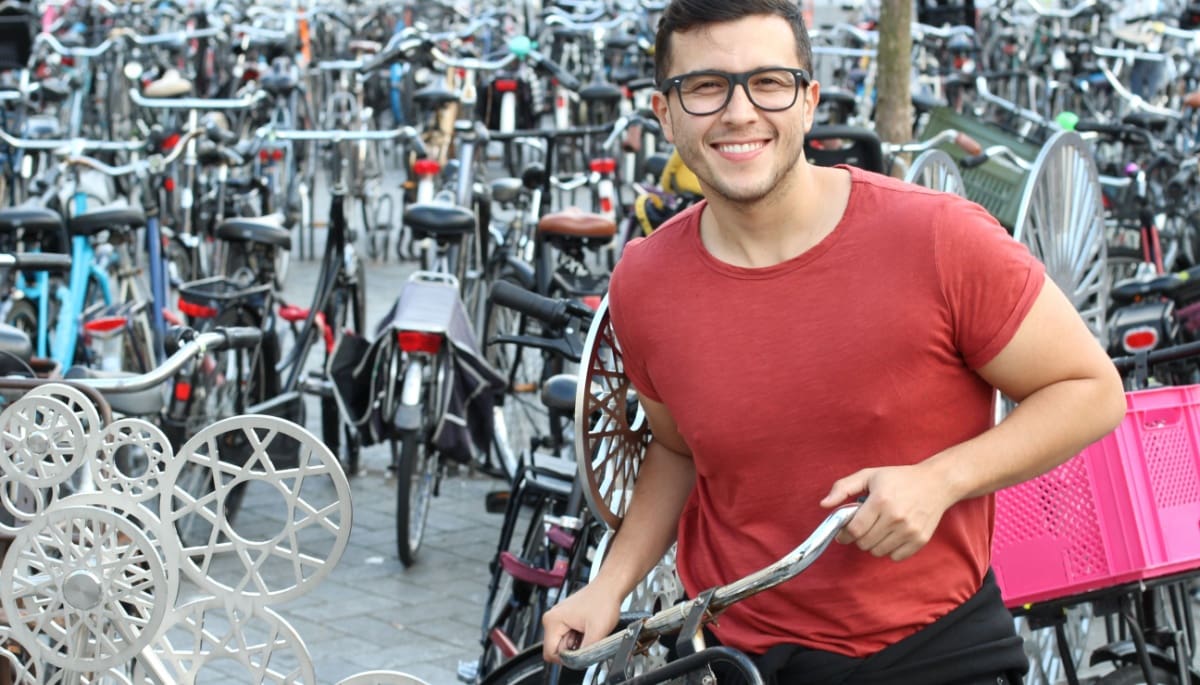Summer isn’t over yet, the sun is shining again, so it’s still important to wear sunscreen. But these creams are not good for nature. How do you choose a sustainable alternative?
Jumping into the water quickly, shortly after applying sunscreen: it’s very tempting on a hot day. But the greasy layers of sunscreen you often see floating on the water in summer hotspots really show: That’s not good for the environment. In the evening, leftover sunscreen is rinsed off under the shower and eventually ends up in nature.
Sunscreen protects us, but the environment looks at it differently. “It’s still challenging to make a cream that doesn’t contain any environmentally harmful ingredients whatsoever,” says a Consumers’ Association spokesperson.
What makes sunscreens so bad for nature? Among other things, there are two types of UV filters, which are substances that protect you from the harmful effects of the sun. They come in two types: physical and chemical filters. The sunscreen with a physical filter stays on the skin and reflects the sun’s rays as it was. Chemical filters penetrate the skin. As a result, some of the rays are absorbed, making the sun less harmful.
Coral faded
The effectiveness of these filters varies. According to dermatologist Marcus Mosch, sunscreens based on chemical filters are less effective than physical filters in the long term. You won’t get redness when you rub it in, but this type of cream doesn’t necessarily protect the skin from cancer. Physical filters do it best.
But what is no different: Both types have negative effects. The first is transformed by the sun’s radiation into another harmful substance, hydrogen peroxide. This is harmful to some fish. The second is something like a petri dish for viruses, causing coral bleaching, for example.
Sunscreen may also contain oxybenzone. This UV filter makes corals more susceptible to infection and accelerates bleaching. And a 2015 US study showed that even a small amount can have a devastating effect on the development of coral larvae, after which the larvae do not grow into adult corals. In many places, such as Hawaii and Thailand, sunscreen containing oxybenzone has already been banned.
See what’s inside
How can you protect yourself and limit damage to nature? Pay close attention to what’s in your sunscreen, that’s the number one piece of advice from the Consumers Association. Check if there are not too many microplastics in it. “Manufacturers are under no obligation to indicate which components are used which are microplastics,” says the spokesperson. However, there are quality labels that indicate whether a product is free of microplastics, such as the NaTrue quality label and the European ecolabel.
Reading the ingredients list takes some effort. And to make things a little easier, the Consumers’ Association launched a ranking of sustainable products last year, including sunscreen: Products that do well can be called a “green choice”. When it comes to sunscreen, Zenova Sun Care Sunmilk Sensitive SPF30 is right on top. The packaging is made of recycled material and contains fewer harmful filters than the previous type of cream.
Also dr. Jetske Ultee SPF30 scores high when it comes to low environmental impact. But one of the four UV filters falls into the yellow category because it is not easily biodegradable. In this category are creams with filters that have some important aspects for the environment, such as not being biodegradable very well.
natural variables? not proven
Other sun creams rated well in terms of sustainability aspects include Zenova Suncare sunmilk sensitive SPF50, Etos baby & Kids sun lotion with SPF 50+ and Kruidvat Solait natural sun lotion with SPF 30. Unfortunately, action creams from this list are no longer available.
Remarkably, creams known for their durability, such as Naïf Mineral Sunscreen SPF30 and Suntribe Zinc Sun Stick, are rated Not Recommended. It’s less harmful to nature, but factor 30’s purported protection was not met in testing, according to the consumer association.
And natural variants of sunscreen? They are not recommended by dermatologist Herm Martens, as they have never been proven effective. “For example, small tests with raspberry seed oil show that it does not absorb UV rays.”
Is sustainability too expensive?
Well, with this selection of creams, it is evident that they affect nature as little as possible and still prevent you from turning red like a lobster. There is another point that can influence the choice: the price. Is sustainability too expensive? It wasn’t that bad. For many sustainable options, you won’t even have to pay a renter. only those dr. Jetske Ultee cost a bit more. Maybe it’s worth it: after all, this cream is one of the most durable and one of the best protective.
In general, an expensive sunscreen does not provide better protection than a cheap one. All sunscreens must meet legal requirements, provide the protection they claim and be safe to use.
But the cheapest option to protect yourself and nature is, of course: no sunscreen (or less). You can just put on a hat or wear covering clothes. Staying out of the sun, if possible, is the advice all experts agree on. But even if you’re in the shade, you should sometimes wear sunscreen, because UV rays can reflect off your skin. So find a place where the sun doesn’t reflect a lot, like in the grass, but not near the water.
Another tip: Don’t buy too much sunscreen. Hence you avoid having to throw it away when the expiration date expires twelve months later. According to the Consumers Association, you can still use it, provided it looks good. But dermatologists say it’s not wise to use old-fashioned sunscreen, because it reduces protection.
The Green Guide section answers practical questions about (more) environmentally conscious living. Read previous episodes here.
Read also:
We Take Sun Dangers Seriously: ‘I’d Lie Until the Sheets Dangled’
Both manufacturers and sunflowers are becoming more aware of the sun’s danger. So the consumer uses sunscreen with a higher factor.

“Total coffee specialist. Hardcore reader. Incurable music scholar. Web guru. Freelance troublemaker. Problem solver. Travel trailblazer.”



/s3/static.nrc.nl/wp-content/uploads/2024/04/26152545/data114819028-6ce62a.jpg)



More Stories
The poorer the neighborhood, the fewer the number of vaccinations
Outgoing museum director Andreas Blom remains loyal to Groningen and is wary of floundering. “You must give space to my successor.”
Not only are these beautiful moths resistant to highly toxic plants, but they also use the poison to seduce their mate